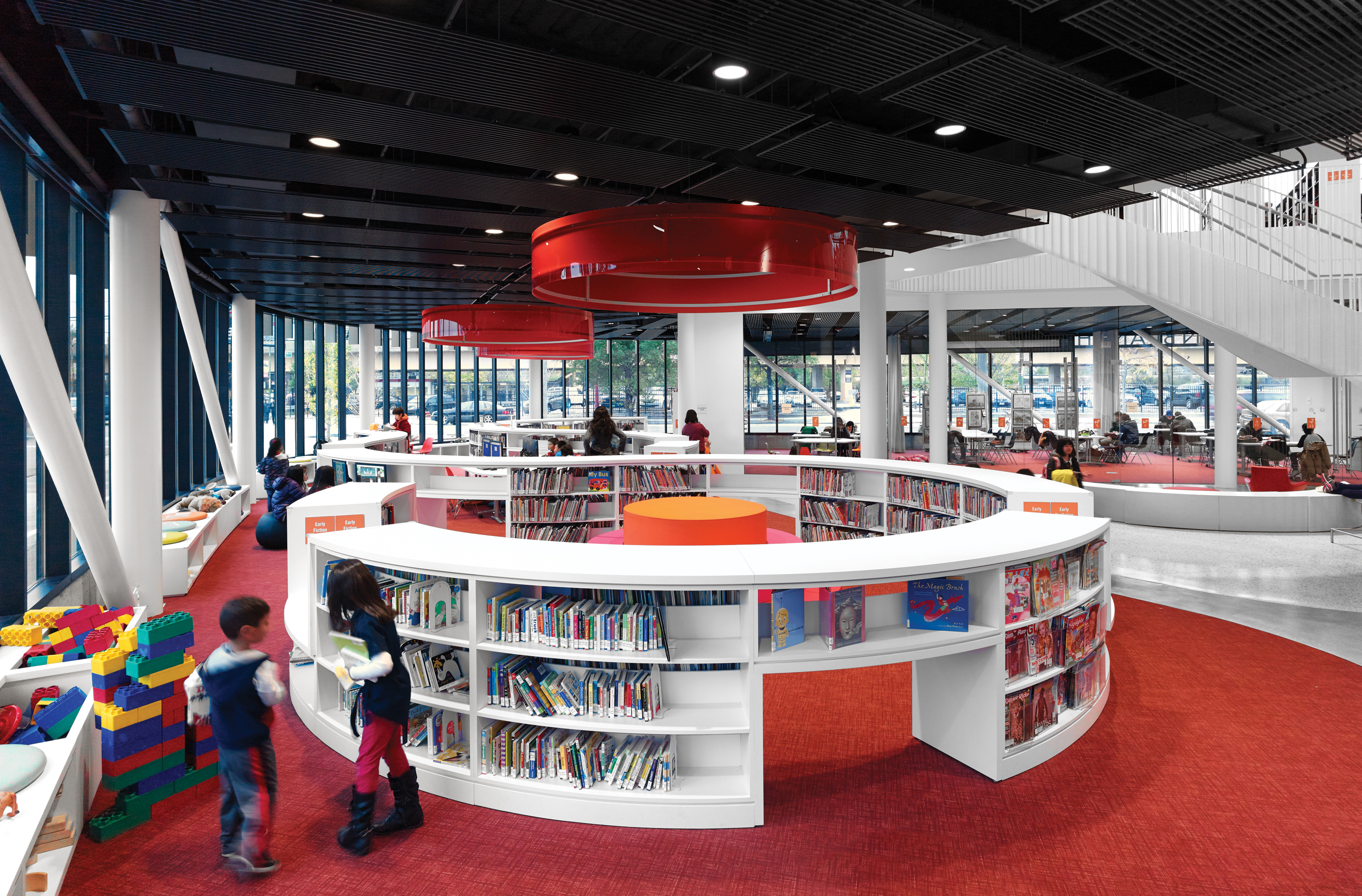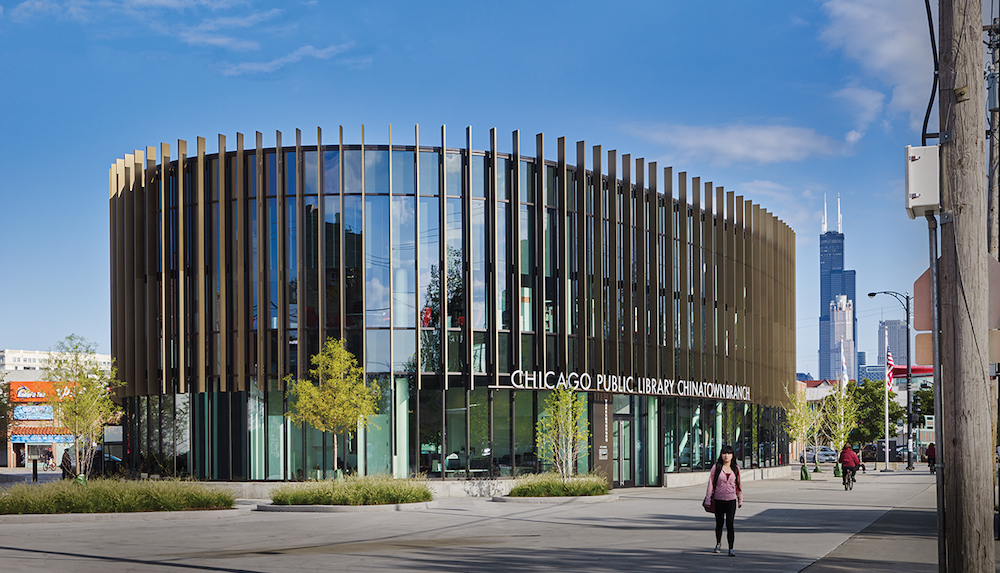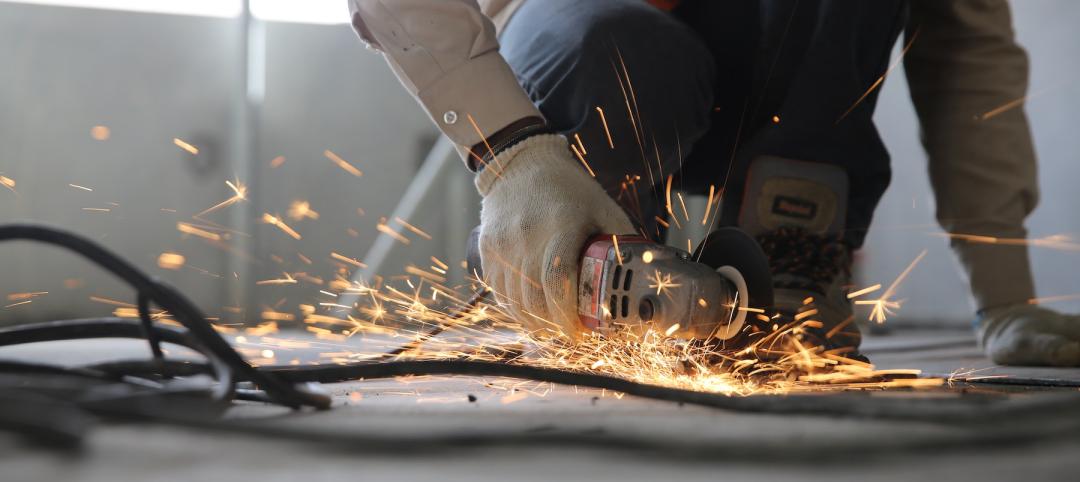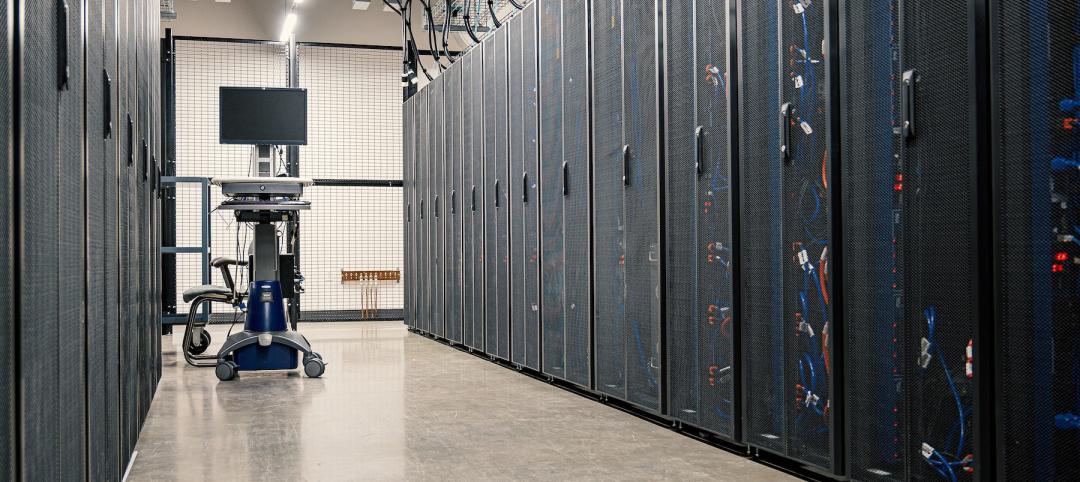One of Chicago’s most significant architectural additions in 2015 was not a booming high-rise at the center of the Loop or a grand new park along the lakefront. It was a small, pebble-shaped, glass-and-steel library that serves as the new beating heart of two neighborhoods on the city’s South Side.
The 16,000-sf Chinatown Branch Library is strategically placed at the nexus of Chicago’s historic southern and emerging northern Chinatown neighborhoods—the intersection of Archer Avenue and Wentworth Avenue—with the goal of uniting the communities and serving as a catalyst for the developing area. It provides much needed public spaces—indoor and out—for the neighborhoods, and makes a bold architectural statement in an area that is rich in tradition.
GOLD AWARD
Chicago Public Library, Chinatown Branch
Chicago, Ill.BUILDING TEAM
+Submitting firm: Wight & Company (AoR, CM)
+Owner: Chicago Public Library
+Developer: Public Building Commission of Chicago
+Architect: Skidmore, Owings & Merrill
+Structural: Drucker Zajdel Structural Engineers
+MEP: dbHMSGENERAL INFORMATION
Project size: 16,000 sf
Construction cost: $19.1 million
Construction period: May 2014 to August 2015
Delivery method: Design-build
The library’s ovate form makes the most of the prominent, yet oddly shaped site. It adheres to Feng Shui principles by matching the existing alignments of the adjacent streets without creating aggressive corners, and is designed and sited to anticipate a future realignment of Wentworth Avenue that would encroach onto the site.
To reinforce the concept of the library as a civic, educational, and social hub, the Building Team wrapped the structure in an ultra-transparent glass curtain wall, which extends the full height of the two-story structure. With minimal interior walls, the library offers patrons panoramic views of the surrounding neighborhood. Likewise, passersby can see deep into the first floor of the library, especially at night, when the building glows like a beacon.
The interior spaces are situated around the library’s central atrium, which functions as a lounge, exhibition, and pre-function space, and features a curved staircase and a single skylight oculus and reflector above.
Directly behind the staircase is a glass-walled, multipurpose community meeting room that is used for lectures, tutoring, quiet reading, lounge space, musical rehearsal, and special events. Acoustical curtains divide the room into smaller areas, and a double-door pantry allows library staff members to serve beverages to both the meeting room and the entry lobby. The first floor also houses the children’s reading area. The adult reading area and teen spaces are on the second level.
Throughout the library, acoustical fabric screens provide definition and separation when needed. Furnishings and book storage solutions, including eye-height shelving and community worktables, are arranged in a variety of configurations to accommodate multiple uses, informal collaborative areas, and intimate reading options.
The Building Team Awards judges commended the project team for creating an iconic library and much-needed community anchor for Chinatown on a relatively modest budget. (The project’s final cost/sf was within 5% of the similarly-sized, single-story Albany Branch Library completed in late 2014.)
To keep costs within reason, the Building Team created a highly flexible, open-plan interior scheme, which eliminated excess circulation spaces, single-function rooms, and non-assignable areas. This allowed the team to downsize the original program from 20,000 sf to 16,000 sf. Also, where possible, the team utilized off-the-shelf materials and systems—for example, the simple yet elegant vertical fins for solar shading, and the radiant mat heating/cooling system suspended from the metal decking, which doubles as a ceiling system—to create a truly one-of-a-kind structure without the exorbitant costs associated with a customized approach.
Since opening in late August 2015, the library has quickly become a new gathering place in Chinatown. In the first four months of operation, more than 95,000 visitors checked out some 55,000 items from the branch, an increase of 28% and 70%, respectively, compared to the same time period in 2014 at the previous facility.
“This is a beautiful jewel, built by utilizing tools and building systems readily available to the industry,” said awards judge Bill Kline, VP, Healthcare Studio Leader with SmithGroupJJR, Washington, D.C. “Any team could do this, but this project shows the benefit of actually doing it, and not just talking about it.”
 Furnishings and book storage, including eye-height shelving, are arranged to accommodate multiple uses, informal collaborative areas, and reading options. Photo: Jon Miller, Hedrich Blessing. Click to enlarge.
Furnishings and book storage, including eye-height shelving, are arranged to accommodate multiple uses, informal collaborative areas, and reading options. Photo: Jon Miller, Hedrich Blessing. Click to enlarge.
 The interior spaces are situated around the library’s central atrium, which functions as a lounge, exhibition, and pre-function space. Photo: Jon Miller, Hedrich Blessing. Click to enlarge.
The interior spaces are situated around the library’s central atrium, which functions as a lounge, exhibition, and pre-function space. Photo: Jon Miller, Hedrich Blessing. Click to enlarge.
Related Stories
Resiliency | Nov 8, 2022
Oregon wildfire risk law prompts extensive backlash from property owners
A bipartisan bill aimed at protecting property owners from wildfires that was passed by the Oregon legislature has prompted a strong backlash.
Building Team | Nov 7, 2022
U.S. commercial buildings decreased energy use intensity from 2012 to 2018
The recently released 2018 Commercial Buildings Energy Consumption Survey (CBECS) by the U.S. Energy Information Administration found that the total floorspace in commercial buildings has increased but energy consumption has not, compared with the last survey analyzing the landscape in 2012.
| Nov 7, 2022
Mixed-use tower in China features world’s highest outdoor pool
Guangxi China Resources Tower, a new 403-meter-tall (1,322 feet) skyscraper in Nanning, China features the world’s highest outdoor pool—at 323 meters (1,060 feet) above grade.
Building Team | Nov 3, 2022
More than half of U.S. contractors say finding skilled workers is big barrier to their growth
More than half of U.S. contractors (55%) say finding enough skilled workers is one of the biggest barriers to growing their business, according to a DEWALT Powering the Future Survey.
Codes and Standards | Nov 2, 2022
New York City construction official wants to boost design-build
The new associate commissioner of alternative delivery in New York City’s Department of Design and Construction aims to encourage more design-build project delivery in the city.
University Buildings | Nov 2, 2022
New Univ. of Calif. Riverside business school building will support hybrid learning
A design-build partnership of Moore Ruble Yudell and McCarthy Building Companies will collaborate on a new business school building at the University of California at Riverside.
Building Team | Nov 1, 2022
Nonresidential construction spending increases slightly in September, says ABC
National nonresidential construction spending was up by 0.5% in September, according to an Associated Builders and Contractors analysis of data published today by the U.S. Census Bureau.
| Nov 1, 2022
Updated Florida building codes helped newer homes withstand Hurricane Ian
Newer homes seemed to fare much better than older structures during Hurricane Ian, suggesting that updated Florida building codes made a difference.
Wood | Nov 1, 2022
A European manufacturer says its engineered wood products can store carbon for decades
Metsä Wood, a Finland-based manufacturer of engineered wood products, says its sustainable, material-efficient products can store carbon for decades, helping to combat climate change.
Data Centers | Oct 31, 2022
Data center construction facing record-breaking inflation, delays
Data center construction projects face record-breaking inflation amid delays to materials deliveries and competition for skilled labor, according to research from global professional services company Turner & Townsend.

















